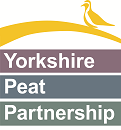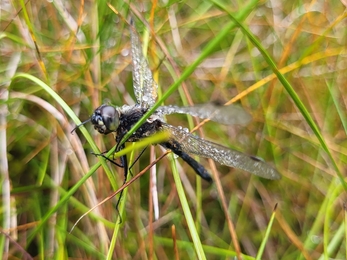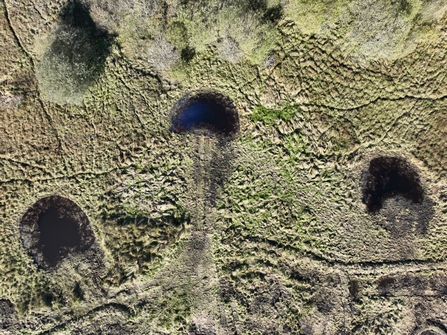Thanks to funding from Natural England’s Species Recovery Programme, YPP has created breeding ponds for three species of dragonfly – black darter, common hawker, emerald damselfly – on Swarth Moor, next to Helwith Bridge in Ribblesdale. The bog could also be a site for reintroducing another dragonfly, the white-faced darter. The species’ first British record was in Yorkshire but it is now extinct here.
Before starting work, YPP volunteers extensively surveyed the 29 hectare site for dragonfly species, walking 63 km and racking up 3,336 hours over 12 surveys. They identified 5 damselfly and 8 dragonfly species, recording 657 damselfly individuals and 552 dragonfly individuals. The results have been uploaded to the national database on iRecord, bringing the total dragonfly records on Swarth Moor from 6 records before YPP’s surveys (in 2023 and 2024) up to 364 records.
Dragonflies spend the majority of their lives – as long as 5 years – underwater as larvae, emerging as adults only in the last few days of their life-cycles. The larvae are fierce aquatic predators, eating other insects, tadpoles and even small fish. Ponds and pools are therefore vital for dragonflies to thrive.
Jessica McMaster, Peat Project Officer at YPP, explains:
“Healthy peatlands are amazing places for dragonflies – the water levels are close to or above the surface, and pools naturally form across the waterlogged moss. This creates safe acidic environments for dragonflies to grow in the absence of larger predators like fish.
“Swarth Moor is important because it still supports these three special peatbog dragonflies that have declined severely in recent decades. We wanted to do something to help them, so we created new pools on Swarth Moor to boost the habitat for these threatened and beautiful dragonflies. Each pool has been designed with the exact habitat requirements in mind for each species, so that they should feel right at home in the new ponds!”




